#Juniper Level Botanical Gardens
Text

Bombus on Asclepias tuberosa 'Hello Yellow' / Bumblebee on 'Hello Yellow' Butterfly Weed at the Juniper Level Botanical Gardens in Raleigh, NC
#Bombus#Asclepias tuberosa 'Hello Yellow'#Asclepias tuberosa#Hello Yellow butterfly Weed#Butterfly Weed#Milkweed#Native plants#Native flowers#Nature photography#Flowers#Juniper Level Botanical Gardens#Raleigh NC#Raleigh#North Carolina#Bumblebee
12 notes
·
View notes
Text
Embrace Nature's Touch: Discover the Delight of All-Natural Body Soaps Online

In a world where self-care and wellness have taken center stage, the quest for products that nourish the body and soul has never been more important. The rise of all-natural body soaps has captured the hearts of individuals seeking a harmonious blend of effective cleansing and the gentle touch of nature. With a diverse array of offerings available online, let's explore some captivating options that promise to rejuvenate your skin and invigorate your senses.
Forest Falls Body Bar Soap: Immersed in the Enchantment of the Woods
Imagine stepping into a serene forest glade every time you shower. The Forest Falls Body Bar Soap encapsulates the essence of nature's green bounty. Infused with invigorating botanical extracts and natural fragrances, this soap brings the refreshing scents of pine, cedar, and juniper to your daily routine. Its exfoliating properties, courtesy of ground walnut shells or oatmeal, gently buff away impurities, leaving your skin revitalized and softly scented.
Secret Garden Rose Soap Bar: Blossoms of Delicacy for Your Skin
Unearth the timeless elegance of roses with the Secret Garden Rose Soap Bar. Crafted with care, this soap harmonizes the nurturing properties of rose essential oil with the exfoliating magic of rose petals. Every shower becomes an indulgent experience as the soap's velvety lather cleanses your skin while the delicate aroma uplifts your spirit. Your bathing ritual becomes a journey to a secret rose garden, pampering you in nature's opulence.
Lavender Bud Face Wash: Lavender's Serene Embrace for Gentle Cleansing
For a soothing cleanse that caters to your face's unique needs, the Lavender Bud Face Wash is a tranquil choice. Lavender, known for its calming properties, gently purifies your skin while maintaining its natural balance. The soap's finely ground lavender buds provide a gentle exfoliation that leaves your skin feeling supple and refreshed. This face wash embodies the art of self-care, inviting you to embrace tranquility in every wash.
Hemp Lemon Soap for Dry Skin: Nourishment Meets Zesty Delight
Dry skin deserves a pampering touch, and the Hemp Lemon Soap rises to the occasion. Enriched with the moisturizing goodness of hemp oil and the invigorating zest of lemon, this soap offers a revitalizing cleanse that quenches parched skin. The natural oils present in this soap create a barrier of hydration, leaving your skin radiant and soft. Each use is a citrus-infused escape, a burst of energy for your body and senses.
Cedarwood Leather Oil for Beard: A Treat for the Modern Gentleman
Grooming takes on a new level of sophistication with the Cedarwood Leather Oil for Beard. Crafted to perfection, this oil nurtures facial hair while infusing a masculine blend of cedarwood and leather scents. The earthy warmth of cedarwood harmonizes with the rugged elegance of leather, creating a fragrance that encapsulates the essence of timeless masculinity. This oil transcends grooming, becoming an olfactory journey that speaks to your inner gentleman.
Hemp Loofah Soap: Nature's Scrub for a Rejuvenating Cleanse
For those seeking a dual-purpose cleansing experience, the Hemp Loofah Soap combines the exfoliating power of a loofah with the nourishment of hemp oil. As you lather up, the loofah gently scrubs away dead skin cells, promoting circulation and leaving your skin smooth. Meanwhile, hemp oil provides a boost of hydration that ensures your skin feels supple and cared for after each wash.
In the digital age, the realm of online shopping offers a gateway to a world of natural indulgence. The allure of all-natural body soaps, from Forest Falls' forest-inspired serenity to the invigorating zest of Hemp Lemon Soap, invites you to embrace nature's bounty in your self-care routine. These soaps aren't merely products; they're invitations to experience the soothing embrace of nature's touch in every lather, cleanse, and aromatic encounter. As you explore the diverse array of options available, you're bound to discover a soap that resonates with your unique needs and desires, transforming your daily rituals into moments of exquisite indulgence.
For more info:-
lavender bud face wash
orange turmeric honey soap bar
0 notes
Text
RALEIGH, N.C. — A 28-acre wonderland of exotic and rare plants from all over the globe is opening for visitors – for two weekends only.
0 notes
Text
‘Escape the chaotic world’ – Juniper Level’s Fall Open Garden – Sept 16-18 & 23-25
‘Escape the chaotic world’ – Juniper Level’s Fall Open Garden – Sept 16-18 & 23-25
Juniper Level Botanic Garden – Raleigh, North Carolina
Juniper Level Botanic Garden – Raleigh, North Carolina
Map of Juniper Level Botanic Garden – Raleigh, North Carolina
RALEIGH, NORTH CAROLINA, USA, September 1, 2022 /EINPresswire.com/ — “How wonderful it is to be in the garden, where we can find solace and escape the chaotic world,” said Tony Avent, the founder and proprietor of Juniper…
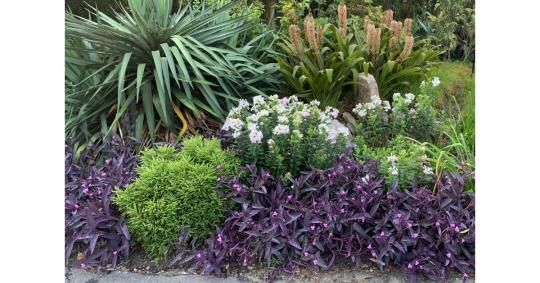
View On WordPress
0 notes
Link
The Juniper Level Botanic Garden will open its doors to the public for eight weekends in 2020, allowing residents to explore one of the world's most diverse plant collections.
The garden, valued at $7.5 million, was gifted to North Carolina State University by Tony Avent, who established the park in 1988 with his late wife Michelle.
The garden grew from two acres south of downtown Raleigh to 28 acres dedicated to education, research, and outreach.
“Currently, we have just over 27,000 different kinds of plants,” Avent said in a press statement. “That makes our botanic garden one of the top five collections in the United States.”
Efforts are underway to establish Juniper Level Botanic Garden as a sister institution to J.C. Raulston Arboretum. While the Arboretum hosts a variety of woody plants, Juniper Level focuses on cultivating perennial plants.
“Raulston Arboretum currently has about 7,000 different plants. Between this collection and the 27,000 at Juniper Level, the result is one of the largest and top collections in the world of genetics,” Avent said. “Combined, these two institutions have the capacity to be the center of the ornamental universe.”
The garden will be open to the public for two weekends each season, starting the weekend of February 21. For future dates, check out the website. Admission is free, and reservations are not required.
---
1 note
·
View note
Text
HOW TO STEP UP YOUR GIN & TONIC GAME THIS SUMMER
Many of us have enjoyed the simple pleasures of a gin and tonic, as it is one of the most popular drinks in bars and on patios across the world.
Its status as a classic beverage is due mainly to its unassuming and balanced profile; the botanical nature of gin plays off the bitter/sweet quality of tonic water, while the bright citrus flavor of lime (or lemon) adds a sour touch which ties everything together.
While this drink may seem simple, there are many different techniques and touches which elevate a good gin and tonic to a great one.
Here, we’ll explore everything from making a simple, but well-made gin and tonic, all the way to creating a drink which will have you completely rethinking this celebrated highball.
CHOOSE HIGH QUALITY INGREDIENTS FOR YOUR COCKTAILS
A standard gin and tonic is easy enough to create, but if a little care is taken while you are making it, rather than simply throwing all the ingredients into a glass, this drink can be so much more.
A good first step would be to recognize the quality of the ingredients you’re using.
THE GIN & THE TONIC
A high quality gin is always a good starting point, as the difference will be immediately apparent in such a simple ingredients list.
However, using higher-end tonics will also have a massive impact, as small batch brands such as Fever Tree often use better quality botanicals, a greater percentage of actual quinine (the main flavoring ingredient in traditional tonic water), and ingredients such as cane sugar as a sweetener, as opposed to high fructose corn syrup.
This premise is simple enough, better ingredients equal a better drink overall, but this is not the only step which can improve your basic gin and tonic.
THE MIXING PROCESS
The process you choose to follow significantly impacts the finished product as well.
Pouring gin in the glass first, before the ice, will help to keep the delicate botanical flavors of the spirit intact by decreasing dilution. It is also advisable to cut your citrus garnish before you start pouring, as this will also reduce the amount of time the gin sits in the ice.
As for the garnish itself, sometimes a lighter touch makes a bigger difference in creating a balanced palette. While cutting citrus into wedges may allow you to add a significant amount of juice to your drink, citrus wheels allow for a more subtle hint of citrus that will complement the flavors of the other ingredients, rather than overwhelming the entire beverage.
Once your garnish is cut and your gin is poured, add ice to your glass, place your garnish wheel on top of the ice, and pour the tonic over the citrus. The carbonated nature of the tonic will release a subtle yet distinct citrus element, further aided by the larger surface area of a wheel cut compared to a standard wedge.
Finally, rather than simply serving your drink with all the ingredients layered on top of one another, give it a quick stir with a bar spoon to combine all the ingredients and make every sip perfectly balanced.
INVESTIGATING BOTANICAL’S
To up your gin and tonic game a bit further, investigate what botanical’s make up the flavoring of the particular gin you are using. This will help you incorporate new ingredients beyond the standard tonic/citrus flavoring and take the botanical's of the gin to new levels.
Take Aviation American gin for instance; while juniper berry, the standard flavoring agent of most London dry gins, is used in its overall profile, it concentrates more on other elements, such as lavender, cardamom and sarsaparilla. Taking this into account, think about ingredients which will add to your drink; a bit of fresh lavender, a few cracked cardamom pods, or contrasting elements such as black peppercorns.
This step goes a long way in heightening the overall flavors and taking your gin and tonic to another level.
FINAL TOUCHES
To push your gin and tonic even further, and reach new heights of tastiness, combine the two principles discussed above with a few more added touches.
Tonic syrups, such as those offered by Porter’s tonics, will give you an even wider variety of flavors to compliment the palette of your preferred gin. It will also allow you to control the amount of tonic flavoring in the drink, as you can add as much or as little syrup as you like, to which you simply add plain soda water.
Moving beyond simple citrus, add fruits such as figs, berries or apples to help highlight any number of delightful undertones, or create agreeable contrasts in the profile.
This is also true of fresh herbs; things like fresh rosemary or thyme straight from the garden not only add interesting flavors to the drink, but greatly increase the overall aromatics, helping to enhance the entire drinking experience.
GLASSWARE
Even choosing the right glassware can be very beneficial. While using a simple rocks glass is the standard for most gin and tonics, switching to a large, stemless wine glass greatly improves the delivery of the aromatic profile to the nose, as these glasses are designed to distribute smells in a much more efficient and focused manner.
However, it is important to always remain aware of the flavor profiles of your base ingredients (the gin and the tonic), as simply introducing whatever herbs or fruits you have on hand may have adverse effects if you’re not careful.
By following these steps, you can create a gin and tonic which is on a much higher level than where you started, but procuring all these ingredients can be difficult.
GET ALL OF THE ABOVE DONE FOR YOU BY CRAFTY COCKTAILS
This is where a Crafty’s curated cocktail box comes in to play.
Not only do we provide you with all the tonic syrup, fruits, herbs and other ingredients you need to make an elevated version of a gin and tonic, we also supply step by step instructions and tutorial video which make sure you’re drink comes out looking and tasting perfect.
A gin and tonic may seem like a simple, classic summertime beverage, but there are many things that you can do to make yours the talk and envy of all your friends.
Let us help you get to that next level by showing you how the gin and tonic can be anything but traditional, and try one of our curated cocktail boxes today.
This article originally appeared on craftycocktails.com
Author Bio:
DUNCAN PECK
Duncan Peck has been behind the bar since the day he was born. His passion is creating vibrant and thought-provoking cocktails. Duncan has held head bartender and cocktail program creator positions (among others) at various reputable establishments across Canada. While his love of cocktails is his true passion, he is an avid snowboarder, loves collecting Star Wars Lego, and has a master’s degree in Classical Archaeology from the University of Alberta, through which he spent many summers in Europe digging up old Roman ruins (and learning about local cocktail culture too!).
1 note
·
View note
Text
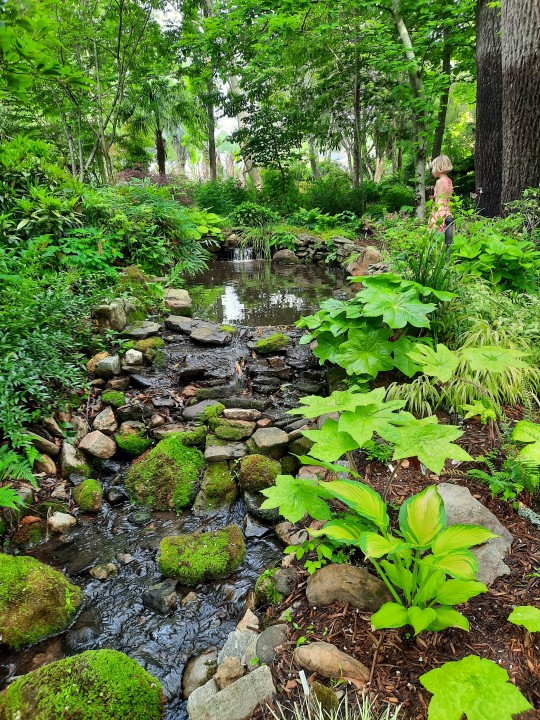

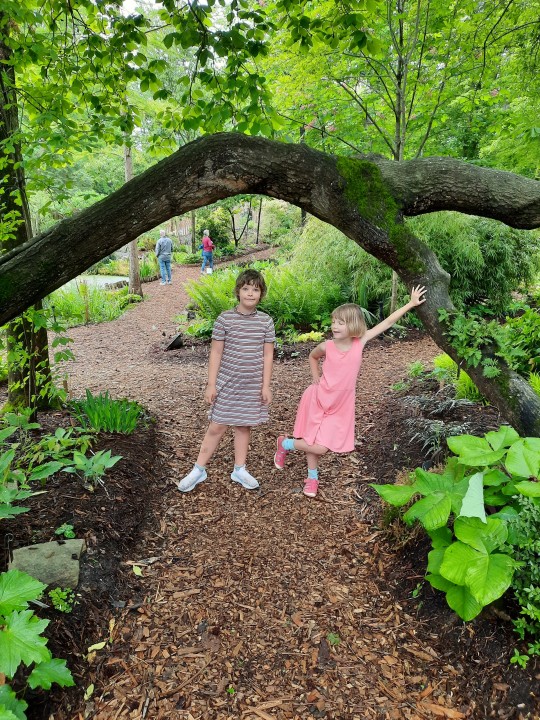
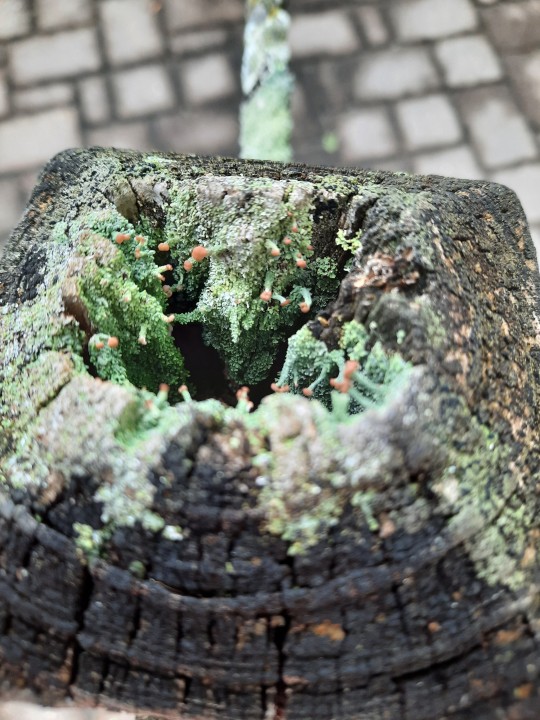






Took my kids to Juniper Level Botanic Gardens today for their Spring open garden weekend! We had lots of fun exploring!
0 notes
Photo
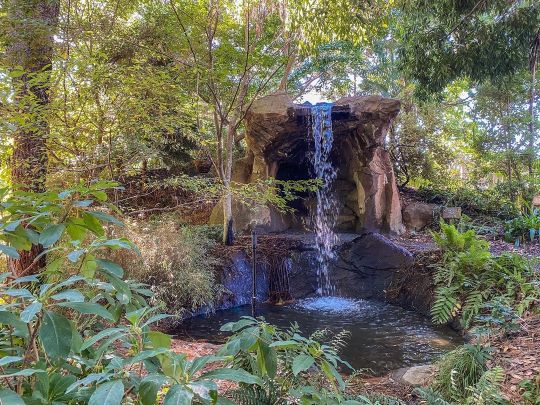
Paradise looks a lot like #Juniperlevelbotanicalgardens #juniperflats Some of my favorite parts are the #StupidSculpture installations! Especially the #rattlesnake lovely escape here in North Carolina! (at Juniper Level Botanic Gardens) https://www.instagram.com/p/CVtmCRSA46j/?utm_medium=tumblr
0 notes
Text

Gloriosa superba / Flame Lily at the Juniper Level Botanical Gardens in Raleigh, NC
#Gloriosa superba#Flame Lily#Climbing lily#Creeping lily#Glory lily#Gloriosa lily#Tiger claw#Agnishikha#Fire lily#Nature photography#Flowers#Juniper Level Botanical Gardens#Raleigh NC#Raleigh#North Carolina#Lily
6 notes
·
View notes
Text
Plant shortage follows gardening boom
Plant shortage follows gardening boom
Juniper Level Botanic Garden – Raleigh, North Carolina
“The Gardening boom of 2020 continues prominently into 2021,” said Tony Avent, founder and proprietor of Juniper Level Botanic Garden and Plant Delights Nursery in Raleigh. “Last year, the boom really started with the existing gardeners. Then, the longer COVID went on, we began to see more orders from Gen Xers and millennials. We continue…

View On WordPress
0 notes
Photo

Seven of the world's top botanical and horticultural experts will speak at the 2021 Southeastern Plant Symposium and Rare Plant Auction, according to event organizers Mark Weathington, Director of JC Raulston Arboretum at NC State University, and Tony Avent, Founder of Juniper Level Botanic Garden and Plant Delights Nursery. MUCH MORE on fashionado.net/LIFESTYLE #botanical #plants #flowers #expert #southeasternplantsymposium #rareplants #garden #gardening #green #greenthumb #botanicalgardens #arboretum #landscape #designer #fashionado https://www.instagram.com/p/COvkQlnNCkL/?igshid=dz6muv828c97
#botanical#plants#flowers#expert#southeasternplantsymposium#rareplants#garden#gardening#green#greenthumb#botanicalgardens#arboretum#landscape#designer#fashionado
0 notes
Text
0 notes
Photo

Summer Gardening

Many people also think you cannot plant in the summer, which is simply not true. “Summer is an incredible time in the garden, says Tony Avent, founder and proprietor of Juniper Level Botanic Garden and Plant Delights Nursery in Raleigh, North Carolina. “Many plants...
https://gardeningmagazine.co/summer-gardening/
0 notes
Text
Royalgreen Showflat
Royalgreen condo is proudly presented to you by Allgreen Properties Limited (长春产业), a reputable awarding-winning and one of Singapore’s top leading developer. Founded in 1986, Allgreen was established as the property development division of the Kuok Group in Singapore.
Allgreen has a good diversification portfolio of developments in Singapore consisting of residential,mixed developments with retail space,offices, hotels and serviced apartments. Our list of mixed use properties includes Tanglin Mall with Hotel Jen and the largest flagship Great World City that comes 2 office towers,serviced apartments and shopping mall. we have earned strong reputation in terms of our high quality products with stellar track records of very good take-up rate for our past completed projects.
Allgreen’s prominent track records of 52 residential developments include The Cascadia, Viva, Cairnhill Residences, Blossoms @ Woodleigh, The Sorrento, Skysuits @ Anson, Riversails, Suites @ Orchard, Yong Ann Park and many more.

Royalgreen is situated in the heart of district 10 from 2 to 6B Anamalai Avenue. This condo is nestled in the landed housing enclave and is in a highly demanded location along Bukit Timah Road and only 5 minutes walk to Sixth Avenue MRT Station (DT 17). Formerly the site of Royalville, that was sold en-bloc to Allgreen in end 2017 among 9 keen developers who bidded.
Future residents who will be commuting by train, Royalgreen is only 2 train stations to Botanic Gardens MRT Station, that will be the interchange connecting to Circle Line (CCL) and just 4 stations from Newton MRT Interchange station, followed by 2 more stations to Orchard Road shopping belt.
Residents who drive, the nearest expressway will be Pan-island Expressway (PIE), that is only 5 minutes’ drive from Royalgreen. Besides the galore of top elite schools nearby, you may explore more about nearby amenities with Royalgreen location map.
Royalgreen is a rare freehold residential development that is newly launched and situated at 2, 2A, 2B, 2C, 2D, 4, 6, 6A, 6B Anamalia Avenue, in prime District 10 of Singapore along Bukit Timah Road .It is a highly sought address after in this vicinity that is in private landed housings enclave yet surrounded by a wide range of amenities and prestigious schools. Royalgreen is the final plot of the Bukit Timah Collection by Allgreen to be launched that includes of Juniper Hill and Fourth Avenue Residences.
The big land size is 174,000 sqft with 8 exclusive low rise blocks each with 5-storey high. There are a total of 285 exclusive units consisting from 2-bedroom to 4-bedroom+Study units. All the units come with good North-South orientations and there is a grand entrance plaza and vast landscape space for residents to enjoy.
The exterior design of the building is influenced by Brownstone architecture that are highly popular in many new york City neighborhoods. Facilities are spread out and available on the first and roof level, with idyllic views overlooking Good Class Bungalow (GCB) zones. Besides the views, the floating tennis court,swing garden, hammock garden and a gourmet pavilion are also for your enjoyment on the rooftop.
Royalgreen Singapore is conveniently situated only 5 minutes’ stroll to Sixth Avenue MRT station. Making your way to our world-renowned Orchard Road shopping belt and Marina Bay Financial Centre comes with ease as they are only a few stations away from the condominium.
Parents who enrolled their children along the stretch of schools in Bukit Timah, going to these prestigious schools everyday will be convenient with plenty of public transport available and nearby amenities at Sixth Avenue.

Interested home-buyers and keen investors who are considering a freehold condo in prime District 10 can now view and download Royalgreen floor plan & Royalgreen E-Brochure.
For booking of Royalgreen showflat appointment, please kindly leave down your contact details on this website or call +65 61006768 before making your way down to our Royalgreen showflat. Peroidically, the showflat maybe closed to the public due to routine maintenance or private closed-door events organized by the Developer.
If you have already secured an appointment with us via online, please be rest assured that you will be entitled to enjoy our best Developer Price with earlybird discounts. there will be NO commission payable by buyers if you secured your ideal choice unit through us.
Please note that all balance units at Royalgreen condo currently for sale will be on a first-come-first-served basis. If you would like to secure a unit with us via phone call, we can only reserve your choice unit for lesser than two hours and it's subject to approval by our management. Royalgreen prices shown in this website are also subject to change without prior notice.
0 notes
Text
Abandoned Mine Voids for Pumped Storage Hydro - Juniper publishers

Abstract
Pumped Storage Hydro (PSH) is geographically limited but can expand greatly if abandoned subsurface coal mines are leveraged for the lower reservoir. Such lands are already permitted, generally less desirable, and found in regions eager for job creation. Vertical stacking of the upper and lower reservoirs is an efficient use of the land. Water can be raised by electric pumps as part of energy arbitrage; however, water can also be raised with Hydraulic Wind Turbines. HWTs are far less costly than traditional electric turbines, and start-up at lower wind speeds - thereby extending their geographic range. The HWT masts can serve double duty as tent poles to support translucent architectural fabric over the surface lake. This prevents evaporation and ingress of wildlife, and provides an interior space useful for non-electric revenue, such as aquaculture and greenhouses. Water cycled through the system can, in some cases, supplement local sources. Seepage through water tables replenishes clean water. Subsurface water is cool and can be circulated through server farms in data centers which represents a potential revenue source that can be started up well in advance of the primary energy storage operation. Combined, these factors bring an innovative solution to site selection, design, and engineering for PSH which promises accelerated commissioning and permitting, and low-cost operation. The bottom line for communities in Coal Country is more jobs and cheaper power.
Keywords : Abandoned Mine Lands; Pumped storage hydro; Wind turbines; Coal pillars; Erosion; French drains; Natural gas; Power Usage Effectiveness; Nutraceuticals
Introduction
This novel concept includes individual elements studied in detail, however, not coupled to enable the suite of benefits this system provides: low cost, low risk, and short duration. Abandoned Mine Lands (AML) have been studied extensively in many states, including Indiana [1-5]. The use of mine voids for pumped storage hydro (PSH) has been studied in Austria and in the US, but none have included the innovative use of hydraulic wind turbines (HWT). Hydraulic technology is quite mature with products in the mining and oil and gas industries. Components in an HWT last longer and are significantly less massive than conventional electric wind turbines. HWT installations are lower in specific cost, and can start-up with lower wind speeds. Lightweight HWT pumps can be mounted on tall masts to take maximum advantage of the moderate wind resources generally found around Midwest mine lands. Construction work is straightforward, including the formation of a surface lake of 250 acres to a depth of 33 feet. The upper reservoir is lined with bentonite clay, and the shore lines with rip-rap [6-12]. The lake is then filled from local subsurface water. Many communities already use subsurface reservoirs from coal mining for drinking their water - this being fairly common in Kentucky. Although some abandoned mines have left environmental problems without funding for remediation, our concept includes repurposing of these lands using the skills of coal miners who have lost work due to slackening global demand. Should seepage be excessive the mine walls can be coated with spray-applied shotcrete. Shotcrete protects coal pillars, from a rooms-and-pillars extraction method, eliminating erosion from water cycling. French drains (lowered culverts) in the underlying rock will be used at the outlet of the turbine generators to further minimize coal erosion. Cycling of water daily as part of PSH provides ample opportunity for filtration and treatment. Fresh water from precipitation, and clean water from underground, contribute to a potable product which can be sold into local water utilities, or released into nearby streams. State and local governments are often motivated to ease and accelerate the permitting process for the benefits provided in jobs, revenue, and environmental clean-up, such as the Mineville project near Moriah, NY, USA. All mine operations required by this new concept are well-established. Pipes are all vertical, the penstock is buried, and there is no boring – factors which greatly reduce cost and development time. Many challenges faced by conventional PSH schemes are simply absent with PSH on AML with HWT. Equipment is cheaper. Dirt movement is minimized. Specialized labor is reduced. Many forms of environmental impact are obviated. Construction can be completed in three years.
Firming nuclear power was a strong motivation for the early US lead in PSH, but no new PSH installations have been built in 20 years, and only three are under consideration (Eagle Crest, Golden Butte, and Swan Lake, all in the Western US). A new need is rising because the utility-scale levelized cost of energy (LCOE) for wind and solar are now lower than for new installations of coal or natural gas. With low cost PSH to firm intermittent renewables, electricity rates can be reduced, and overall environmental harm from power generation can be greatly reduced. The powerful forces and strong public opinion in this direction will soon overcome organizational inertia, conservative risk aversion, and regulatory near-term focus of many Public Utility Commissions and utility Integrated Resource Plans. Competition comes from batteries. There is a narrowing window of opportunity to advance PSH before battery costs drop low enough to preclude PSH forever. Our team has studied auxiliary revenue sources, beyond energy arbitrage and grid level services (e.g. load leveling, voltage regulation, power quality). Of particular interest is the use of subsurface cooling water for data centers, which can be started in advance of the start-up of the PSH function. Data centers are huge energy consumers (10-50 MW) [13- 16]. Power Usage Effectiveness (PUE) is how data center operators measure how clean their operations run. Cool subsurface water can save up to 20% of annual costs, paying back data center capital expenditures (CAPEX) every year! Some US States offer tax incentives to encourage siting of data centers within their borders. When using the HWT energy to power the computer chips, the “green” factor becomes very attractive. Other auxiliary revenue generators include flooding ponds for raising sustainable protein from fish or growing specialty algae for nutraceuticals or fuel. Hydroponics suspended above the lake can provide fresh produce locally to regions far from the sunny climes where salad ingredients and fresh vegetables are typically grown and shipped from. Diet improvement to communities where obesity is rampant could become significant. It is even possible to use architectural transparent membranes, hung between the HWT masts, to enclose the interior [17-20]. In addition to providing security to the site, it can even be used for year-round recreation, vertical greenhouses, botanical gardens, and other uses to be discovered by local innovators (Figure 1).
Charge and Discharge
In this design, there are several water pumps that are driven by hydraulic motors. These hydraulic motors are driven by hydraulic pumps at the wind turbines. The shafts of these hydraulic motors are independent of each other and of the hydro-turbine generator to generate electricity.
Means of charge
a) The wind turbine-driven water pumps. The principle is that the wind turbine rotates a hydraulic pump on top of the tower. The pump circulates a pressurized medium in the closed-loop system to drive a hydraulic motor in the bottom of the reservoir. The hydraulic motor is coupled to a water pump that is used to pump the water to the upper reservoir.
b) Several wind turbines can drive a common hydraulic motor (coupled to a water pump).
c) The hydro turbine-generator set can be used as a water pump to charge the upper reservoir. In this case, the electricity is taken from the grid to charge the upper reservoir.
Means of discharge
a) The hydro turbine-generator set is used to discharge the water from the upper reservoir and generate electricity.
The operation of the storage can be categorized as follows:
a) The upper reservoir is at the minimum level. The production of electricity is stopped. Wind-driven hydraulic pumps are set to the maximum power to fill the upper reservoir. Wind Turbine MPPT and the water pump speeds are controlled independently [21]. Since the shaft of the wind turbines and the shaft of their water pumps are mechanically isolated, these two control objectives can be achieved.
b) The upper reservoir is between the minimum (~30%) and maximum (~80%) capacity. The water level (height) is high enough to enable harvesting of significant energy. In this case, the hydro turbine-generator is used to generate electricity. The wind turbines continue to pump the water to the upper reservoir while the reservoir is being discharged through the turbine. In this case, the charge and discharge of the upper reservoir occur simultaneously (Figure 2).
Technical Challenges
Water quality is the #1 most-cited concern, as discovered by our team from the School of Public and Environmental Affairs. This concern was explored by team members from the Indiana Geological and Water Survey, who determined that this issue is quite manageable, and that many communities use coal mine voids for drinking water - it meets all EPA requirements. Mine integrity is an issue to consider [22-24]. Our answer is to leverage shotcrete to shore up the remaining coal pillars, and to use French drains on the floor for higher-velocity water jets downstream of the turbine-generator. Additional measures may be required, depending on local geology. Upper reservoir erosion is a concern in the non-tented version, as the topsoil is deep in the Midwest and the PSH system is expected to be used daily. In addition to the Bentonite clay lining, a 3mm or thicker polymer liner may also be required.
Economic Feasibility
There are some 400,000 abandoned mines in the US, 190,000 which are below ground, and at least 5000 of various size in the Midwest. While each mine has unique characteristics, our approach is to modularize the PSH/AML w/HWT and carry three design sizes. The nominal module for costing is a mine void having 400 feet of head, and a pumped-storage system delivering 200 MW for 7 hours. A reversible Francis turbine at this rating costs approximately $70M installed and commissioned. The subsurface powerhouse is $3M. The upper reservoir is slightly larger than the underground void and is 250 acres times 33 feet, or 8250 acre-feet (AF) of volume. Using Illinois excavation cost estimates for reservoirs and doubling their formula to include a Bentonite clay liner plus ample shoreline riprap (perhaps from French drain excavation) is $10M. Fencing around such a lake is $0.5M, and filtration (20 units) costs $13M. Steel piping of 5 ft. diameter is $14.8M and up-pumps of 2000 AF/min are $50M for two such units. Shotcrete to line the walls of a coal mine is the largest single expense at $100M, with total labor costs over 3 years of $2.3M. Assuming that electrical transmission lines are nearby (likely in southern Indiana and Illinois coal country), the interconnect infrastructure is estimated at $50M. The total cost for this 200 MW, 1400 MW-hour PSH system is just under $300M, or $1,494/kW. A study of non-electric, auxiliary revenues based on server farms, hydroponics, and aquaculture show total addressable market (TAM) sizes for a 5-state region surrounding Indiana of $20.1B, $6.1B, and $73M, respectively. Co-location with paper mills or steel rolling bring further TAM of $3.4B and $4.7B. These auxiliary revenues improve the economic efficiency and reduce financial risk for funders as these operations can start early and begin to provide cash flow. This arrangement is likely to attract a lower discount rate than more traditional projects (Figure 3).
Market Feasibility
Wind and solar operations at the utility-scale are currently much less expensive than new installations of coal or gas thermal plants. A 2019 report by McKinsey forecasts parity between wind and existing coal plants before 2030! Meanwhile, energy prices are forecasted to continue rising in Indiana, where the ranking for electricity rates has slid from the top 10 to number 33 in two decades. A widely-held concern with non-dispatchable wind and solar is that intermittent power production adversely affects certain manufacturing operations. Because Indiana is the number 1 state for manufacturing intensity (per capita), reliability of power is paramount to decision-makers. Introducing grid-scale energy storage using PSH/AML/HWT provides stability for these low-cost resources. In this way, our concept overcomes the primary objection to renewables, and at the same time lowers the cost of electricity. The boost in attracting manufacturing jobs to Indiana is considerable, as our power becomes cheaper and also greener! The day-ahead market run by Independent Systems Operators (ISOs) do not provide long-term commitments to energy arbitrage, lowering its appeal to financiers. Funder may also weigh capital costs against competing energy storage systems such as vanadium redox flow batteries. Yet the specific costs for our system are significantly lower than batteries. Installation time is longer than for batteries, but much faster than traditional PSH. Therefore, we believe that with an early start, through winning this competition, we can introduce technology which has long-term potential to participate in grid-scale storage on an hourly, dispatchable basis, as well as on a seasonal basis if needed to address challenges with generation fleets in the future. Arbitrage of energy with the low specific capital cost for PSH/AML are economically viable. Ramp-up for PSH can occur in under six minutes, matching all but the most advanced natgas peaking plants. Multi-hour operation to flatten the “duck” curve is an excellent pairing to solar power, where PSH/AML can provide user needs in the evening hours. Non-electric revenues arising from our innovative concept have, within a 5-state region, a TAM market of $137 billion in annual revenues. These can be added incrementally, making the entire system flexible and adaptable as market needs shift [25,26].
Environmental concerns have been addressed above regarding water and gob piles. Many AML sites are disused, being unsuitable for agriculture. Such lands are of low value, and thus can be obtained for below- market rates. Land use changes away from productive activities are minimal. Local economic development agencies are hungry for solutions to boost revenue from abandoned mine lands. Very few alternatives are forthcoming. The repurposing of subsurface voids meticulously excavated over many years to extract fossil fuels can now pay a dividend in boosting renewable energy through firming of intermittent solar and wind. The work required in construction of the PSH/AML project will transform these marginal lands to full productivity. The operation of water cycling for energy storage provides motivation and opportunity to clean up the water from leachates accumulated over decades. The overall environmental impact assessment should be net positive, and that, to a significant degree [27-29].
Conclusion
Non-performing and low-value land can be converted to grid-scale energy storage which has several auxiliary revenue streams beyond the day-ahead energy arbitrage market. Some of these additional value streams can begin generating cash in advance of the primary economic function of the PSH system. Utility-scale installations of wind and solar power are now superior in levelized cost of energy (LCOE) compared to natural gas and coal-fired thermal power plants. Their intermittent nature can be addressed by grid-scale storage, which can be met economically with the conversion of abandoned mine lands and the addition of hydraulic wind turbines. This method of energy storage provides more benefits than any other method.
Acknowledgement
Contributions to this work were made by David McCauley, Gregory A. Ballard, and Kevin Ellett. Student contributions came from Brayden Ratekin, Jared Davis, Manan Shah, MaCie’ Moore, Raymond Rummel, Brendan Smith, John Watkins, Caleb Perkins, Dylan Wengerd, Kokeb Gebre, and Yogit Bhatt.
To Know More About Insights in Mining Science & Technology click on: https://juniperpublishers.com/imst/index.php
To Know More About Open Access Journals Please click on:
https://juniperpublishers.com/index.php
#Juniper Publishers#Open Access Journals#Juniper publisher reviews#Mining Science & Technology#Journal of mining science#Peer review journals
0 notes